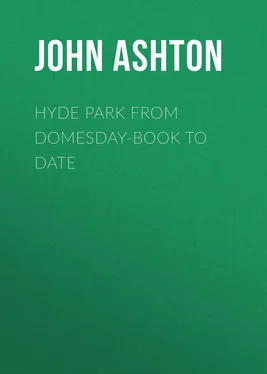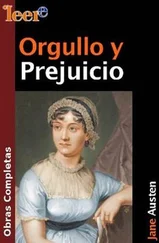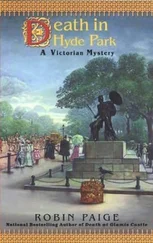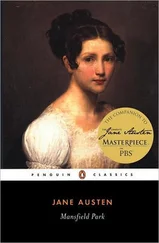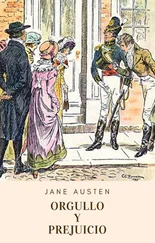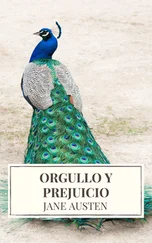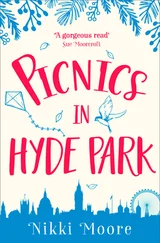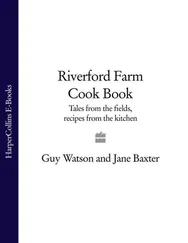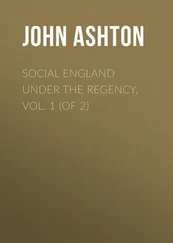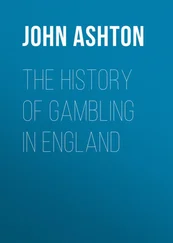John Ashton - Hyde Park from Domesday-book to Date
Здесь есть возможность читать онлайн «John Ashton - Hyde Park from Domesday-book to Date» — ознакомительный отрывок электронной книги совершенно бесплатно, а после прочтения отрывка купить полную версию. В некоторых случаях можно слушать аудио, скачать через торрент в формате fb2 и присутствует краткое содержание. Жанр: foreign_antique, foreign_prose, на английском языке. Описание произведения, (предисловие) а так же отзывы посетителей доступны на портале библиотеки ЛибКат.
- Название:Hyde Park from Domesday-book to Date
- Автор:
- Жанр:
- Год:неизвестен
- ISBN:нет данных
- Рейтинг книги:3 / 5. Голосов: 1
-
Избранное:Добавить в избранное
- Отзывы:
-
Ваша оценка:
- 60
- 1
- 2
- 3
- 4
- 5
Hyde Park from Domesday-book to Date: краткое содержание, описание и аннотация
Предлагаем к чтению аннотацию, описание, краткое содержание или предисловие (зависит от того, что написал сам автор книги «Hyde Park from Domesday-book to Date»). Если вы не нашли необходимую информацию о книге — напишите в комментариях, мы постараемся отыскать её.
Hyde Park from Domesday-book to Date — читать онлайн ознакомительный отрывок
Ниже представлен текст книги, разбитый по страницам. Система сохранения места последней прочитанной страницы, позволяет с удобством читать онлайн бесплатно книгу «Hyde Park from Domesday-book to Date», без необходимости каждый раз заново искать на чём Вы остановились. Поставьте закладку, и сможете в любой момент перейти на страницу, на которой закончили чтение.
Интервал:
Закладка:
Another engraving shows the Queen about to take assay of the deer, the kneeling huntsman handing her a knife for the purpose. And this is “the English manner, in breaking up of the Deare.
“First, where hee appointeth the Deares foote to be cut off, and to be presented to the Queen or chiefe, our order is that the Queen or chiefe (if so please them) do alight and take assaye of the Deare with a sharpe knife, the which is done in this maner. The deare being layd upon his backe, y eQueen, chiefe, or such as they shall appoint, comes to it. And y echiefe huntsman (kneeling, if it be to the Queen) doth hold the Deare by the fore foote, whiles the Queen or chiefe, cut a slit drawne alongst the brysket of the deare, somewhat lower than the brysket towards the belly. This is done to see the goodnesse of the fleshe, and howe thicke it is.”
In the 1611 edition, James I. takes the place of Queen Elizabeth.
James I. no doubt, as he was so fond of hunting, hunted the deer here, although he had Theobalds and Windsor, with many another hunting ground. And the deer were kept up in Charles I.’s reign, when Hyde Park was still an enclosed and private Royal park: and the deer were still preserved, for, when the Park was sold according to a special Resolution of the House of Commons of the 1st Dec., 1652, what were left of the deer, during those troublous times, were sold for the benefit of the Navy, and they were valued in the specifications at £765 6 s. 2 d. I can find no record of their sale – but they were sold. And soon after the Restoration, when James Hamilton, Esq. (one of the Grooms of the Bedchamber), was Ranger – he advised the Park being surrounded by a brick wall, and restocked with deer, which was done. But the deer no longer roamed the Park at will; they were confined in an enclosure, called Buckdean Hill, the Deer Harbour, or the Paddock, close by the Keepers’ Lodge, admission to which seems to have been obtainable by payment of a shilling – at least, in 1751, as we see by the following extract from a poem by W. H. Draper, entitled, “The Morning Walk, or the City Encompass’d.”
“Behold the ranger 16 16 Keeper, whose duty was to shoot trespassing dogs, and foxes.
there! with gun aslant,
As just now issuing from his cottage 17 17 His lodge.
fold,
With crew Cerberian , prowling o’er the plain
To guard the harmless deer, and range them in
Due order set, to their intended use.
Key he can furnish, but must first receive
One splendid shilling, e’er I can indulge
The pleasing walk, and range the verdant field.”
As far as I can learn, the last Royal shooting of the deer in Hyde Park was on the 9th Sept., 1768, and it is the more interesting, considering how intimately we are now allied with the House of Saxe Cobourg Gotha. In The Public Advertiser of Sept. 12, 1768, we read: “Same day, their Serene Highnesses the two Princes of Saxe Gotha, and many other Foreigners of Distinction, together with a great Number of our own Nobility, and Gentry, attended the Diversion of Deer Shooting in Hyde Park, which continued all the Evening till Dark, when one was at last killed, after being shot at ten Times. What rendered it so difficult to kill him, was the Hardship of getting him from among the Deer, and no other was allowed to be shot at but this one: Several Wagers were won and lost upon this Occasion.”
The deer still remained, until early in this century, in this enclosure, which was in the north-west corner of the Park, bounded on the north by the Park wall, on the west by Kensington Gardens, on the south by the Serpentine, and on the east by a fence. Dogs were allowed in the other parts of the Parks, as our poet says, —
“But lo! a faithful spaniel, there stretch’d out,
Not food for powder meet, relentless gun!”
But the “relentless gun” was evidently necessary against the foxes, for there is a Minute of the Board of Green Cloth in 1798, by which Sarah Gray is granted a pension of £18 per annum, to compensate her somewhat for the loss of her husband, who was accidentally killed by a shot from the gun of a keeper, who was hunting for foxes in Kensington Gardens. It would be a thankless task to look for them there at the present time; but it is not very many years since there was a badger, who took up his abode in a drain in the Gardens, and could not be dislodged. Strange and weird legends were told concerning this badger, one of which was that he had devoured a policeman, clothing and all, with the exception of his boots and helmet. The badger was ultimately caught, and purchased, I believe, by the Baroness Burdett-Coutts, who sent it into the country, and there gave it its liberty.
CHAPTER II
Hyde Park in the early Commonwealth – Its sale – Toll on horses and carriages – A hurling match – Cromwell’s accident – Attempts to shoot him in the Park – Notices against trespassers – The Park at the Restoration.
It was not until after the martyrdom of the King, and a little before Cromwell found himself strong enough to become Lord Protector of the three Kingdoms, that the Parks, etc., were sold. But on Dec. 31, 1652, was passed “An Act for the Exposing to Sale divers Castles, Houses, Parks, Lands and Hereditaments, Belonging to the late King, Queen, or Prince, Exempted from sale by a former Act:” and among them was “All that Park commonly called Hide Park , in the county of Middlesex , with all Houses, Woods and Perquisits thereunto belonging.”
At the beginning of the troubles between the King and Parliament, the exclusiveness of the Park grew somewhat lax, and it became a place of fashionable resort; but the sour, puritanical spirit of the times prevailed, and, in 1645, it was ordered “that Hyde Park and Spring Gardens should be kept shut, and no person be allowed to go into any of those places on the Lord’s day, fast and thanksgiving days, and hereof those that have the keeping of the said places are to take notice and see this order obeyed, as they will answer the contrary at their uttermost peril.” And, presumably, this order was acted on until 1649, when it was resolved that the London Parks – Whitehall, Hampton Court, the New Park at Richmond, Westminster Palace, Windsor Castle and Park, and Greenwich House and Park – should be the property of the Commonwealth, and thrown open to the public.
But in 1652, it was thought fit to sell Hyde Park, Greenwich House and Park, Windsor Park and Meadows, Cornbury Park, Oxon, Somerset House, and Vauxhall House and Grounds, for the benefit of the Navy, and duly sold they were. Three lots were made of Hyde Park – called the Gravel Pit division, or that part abutting on the Bayswater Road, which was very well wooded; the Kensington division, which lay on the south, which was principally pasture land; whilst the third comprised what were termed the Middle, which comprised the Ring, the Banqueting division – in which was the Cake House – near the present site of the Receiving House of the Royal Humane Society; and the Old Lodge division, which said Old Lodge was near Hyde Park Corner; and this third lot was very well wooded.
The first lot was bought by Richard Wilcox for the sum of £4144 11 s. ; the second was secured by John Tracy for £3906 7 s. 6 d. ; and the third fetched £9020 8 s. 2 d. , and became the property of Anthony Dean, a ship-builder, who let the right of pasture of his portion; and the lessees immediately began to recoup themselves by exacting a toll on the carriages and horses entering the Park. Says Evelyn, in his diary, under date of April 11, 1653, “I went to take the aire in Hide Park, where every coach was made to pay a shilling, and horse sixpence, by these sordid fellows who purchas’d it of the State as they were cal’d.”
Читать дальшеИнтервал:
Закладка:
Похожие книги на «Hyde Park from Domesday-book to Date»
Представляем Вашему вниманию похожие книги на «Hyde Park from Domesday-book to Date» списком для выбора. Мы отобрали схожую по названию и смыслу литературу в надежде предоставить читателям больше вариантов отыскать новые, интересные, ещё непрочитанные произведения.
Обсуждение, отзывы о книге «Hyde Park from Domesday-book to Date» и просто собственные мнения читателей. Оставьте ваши комментарии, напишите, что Вы думаете о произведении, его смысле или главных героях. Укажите что конкретно понравилось, а что нет, и почему Вы так считаете.
